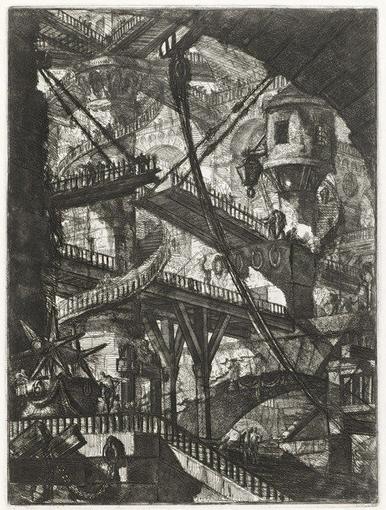Over the years this column has prompted a number of letters from people serving prison sentences. Today’s picture is dedicated to them. It is one of fourteen large engravings of imaginary prisons, created by the Italian etcher and engraver Giovanni Battista Piranesi in the middle years of the eighteenth century. Its title, which refers to the most prominent of its many fanciful architectural details, is simply The Drawbridge.
Piranesi was born near Mestre, on the outskirts of Venice, in 1720. The son of a stonemason, he was intended from the outset for an architectural career. In his early twenties, he moved to Rome in the hope of realising that ambition. But commissions were slow in coming so he turned his hand instead to the production of souvenir views, or vedute, of the Eternal City. Until his death in 1778, Piranesi produced a multitude of images celebrating the ruined majesty of ancient Rome. He depicted the city’s broken bridges, its half-buried temples, the shattered bulk of the Colosseum. Rome was the principal destination on that culturally improving peregrination for young noblemen known as the Grand Tour. Aristocrats, connoisseurs and dilettantes flocked to the city; and few of them left without a portfolio of Piranesi’s prints to jog the memory and stir the imagination.
In many of his views he presented elaborate and idealised reconstructions of ancient Roman building types like mausolea or theatres. While catering to the burgeoning market for vedute Piranesi was also in such works touting for business, pleading for opportunities to translate his visionary sensitivity to the classical past into actual buildings of his own design. But as those opportunities failed to materialise, so the character of his imaginings became increasingly febrile and weird – a process which drew him gradually down into the underworld of...


